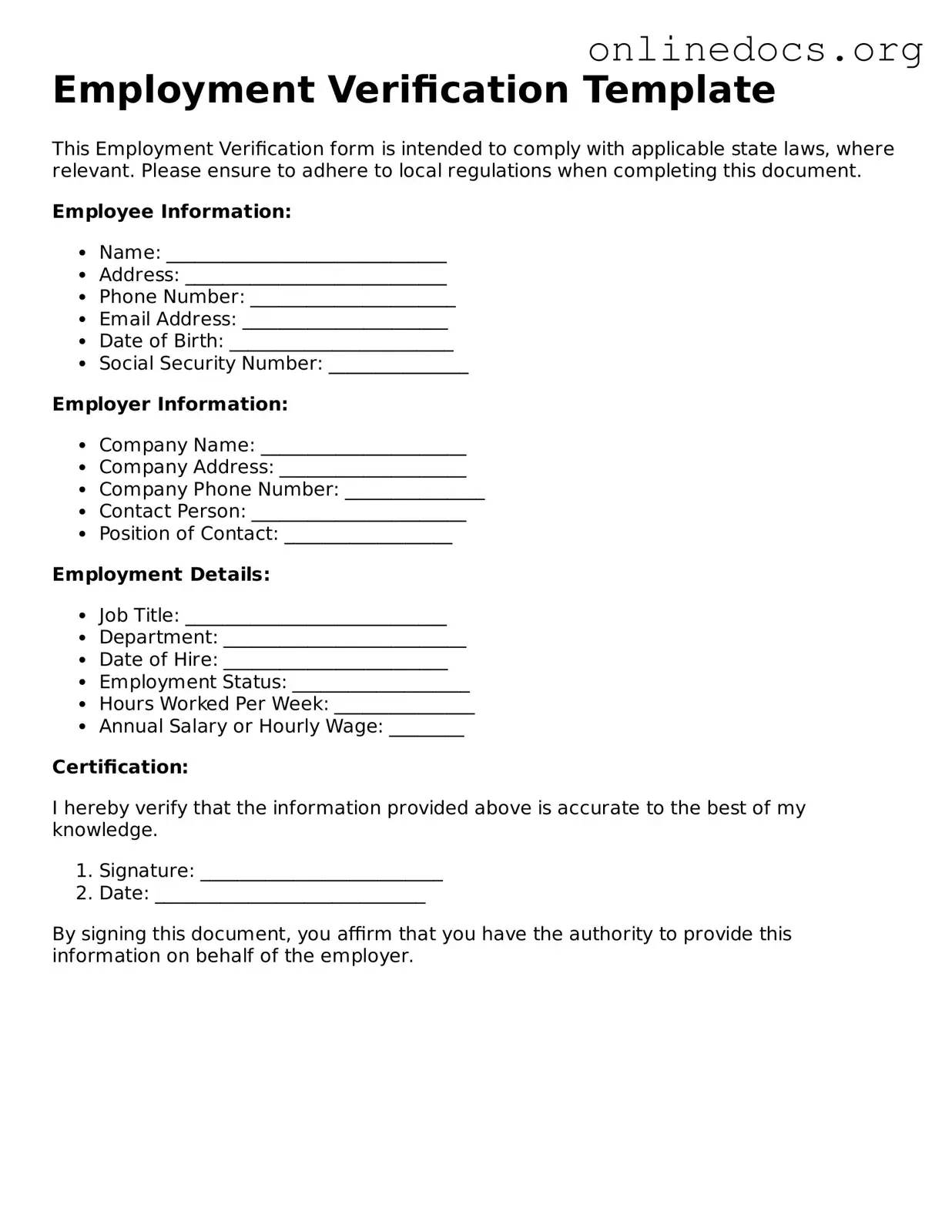The Employment Verification form is quite similar to the W-2 form, which is used by employers to report wages paid to employees and the taxes withheld from them. Both documents serve as proof of employment, but while the Employment Verification form focuses on confirming an individual's job status, the W-2 provides detailed financial information. Employers often use the W-2 for tax purposes, making it a critical document during tax season.
Another document that parallels the Employment Verification form is the pay stub. Pay stubs provide a breakdown of an employee's earnings and deductions for a specific pay period. While the Employment Verification form confirms employment status, the pay stub shows the financial aspect of that employment. Both documents are essential for individuals who need to verify their income for loans or rental applications.
For those considering the purchase of a motorcycle in Texas, it is essential to have a solid understanding of the documents necessary for a smooth transaction, including the Motorcycle Bill of Sale form. This form not only serves as proof of the sale but also facilitates the transfer of ownership, detailing important information such as the purchase price and the vehicle identification number (VIN). Properly executing this document ensures that both the buyer and seller are protected during the sale process and helps in any future dealings with the Texas Department of Motor Vehicles.
The IRS Form 4506-T, Request for Transcript of Tax Return, is also similar in that it can be used to verify employment indirectly. This form allows individuals to request a transcript of their tax returns, which can include income information that reflects employment. While not a direct verification of employment, it serves as a tool for lenders or landlords to assess an individual's financial stability.
Next, the I-9 form is crucial for employment verification as well. This document is required by the U.S. government to confirm an employee's identity and eligibility to work in the country. While the Employment Verification form is often used for employment confirmation after the fact, the I-9 is completed at the start of employment, making it a foundational document in the hiring process.
The Social Security Administration (SSA) earnings record is another document that can provide employment verification. This record tracks an individual's earnings over time and can be requested for various purposes, including loan applications. While the Employment Verification form is typically completed by an employer, the SSA earnings record is generated by the government, offering a different perspective on an individual's employment history.
Bank statements can also serve a similar purpose. They provide a record of direct deposits from employers, which can help verify employment indirectly. While not specifically designed for this purpose, bank statements can provide evidence of consistent income, which can be useful in various situations, such as applying for a mortgage or rental agreement.
Another comparable document is the reference letter from an employer. This letter often includes confirmation of employment dates, job title, and sometimes even a summary of job performance. Like the Employment Verification form, it serves to validate an individual's employment status, but it adds a personal touch that can be beneficial in job applications or networking situations.
Additionally, the unemployment benefits statement can be similar in context. This document provides proof of an individual's previous employment and the reason for their unemployment. While it may not serve as a direct verification of current employment, it provides context about an individual's work history and can be crucial during job searches.
Finally, the employment contract itself is a significant document that outlines the terms of employment. While it may not be used solely for verification purposes, it does provide detailed information about the employee's role, responsibilities, and duration of employment. This contract can serve as a foundational document that supports the claims made in the Employment Verification form.
